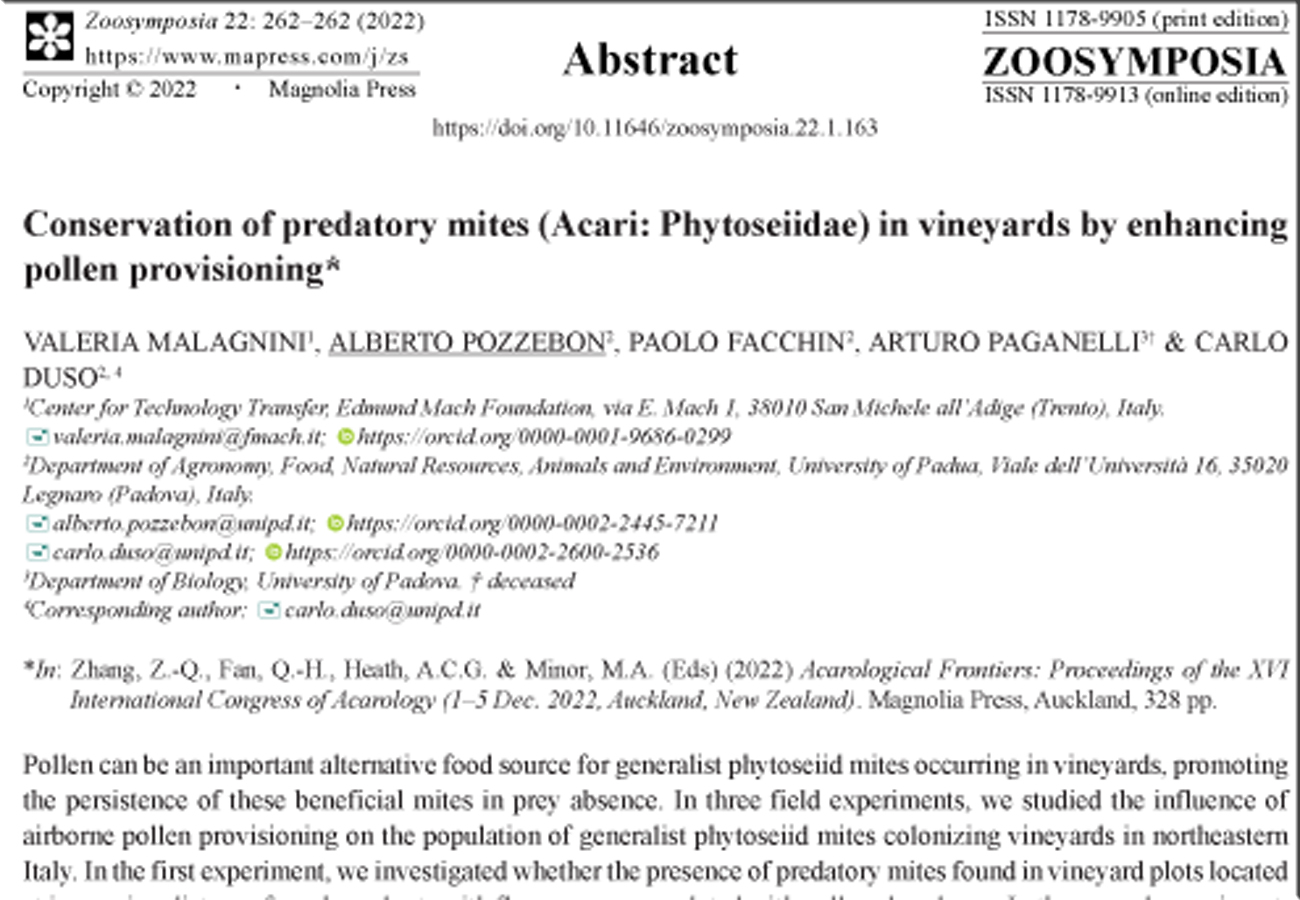Abstract
Pollen can be an important alternative food source for generalist phytoseiid mites occurring in vineyards, promoting the persistence of these beneficial mites in prey absence. In three field experiments, we studied the influence of airborne pollen provisioning on the population of generalist phytoseiid mites colonizing vineyards in northeastern Italy. In the first experiment, we investigated whether the presence of predatory mites found in vineyard plots located at increasing distance from hop plants with flowers was correlated with pollen abundance. In the second experiment, cattail pollen was sprayed on the grapevine canopy to evaluate the effect of this food source on predatory mite populations. In a third experiment, we investigated the effect of grass management based on a reduction of mowing frequency on predatory mite populations. Results were published in Malagnini et al. (2022), and showed that the abundance of the predatory mites Amblyseius andersoni, Kampimodromus aberrans, Phytoseius finitimus and Typhlodromus pyri was associated with pollen availability on grapevine leaves. K. aberrans population increases were promoted by hop pollen abundance. Both pollen spray and reduced the frequency of mowing groundcover increased the densities of predatory mite egg and motile stages. Pollen availability positively affected the four phytoseiid species considered here and promoted stable predatory mite populations in vineyards. According to our results, pollen availability could be guaranteed by: hedges with plants having scalar bloom; reducing the frequency of mowing groundcover inter-rows; pollen spray. These practices can be considered in light of biocontrol tactics to conserve predatory mite populations in vineyards.
References
Malagnini, V., Pozzebon, A., Facchin, P., Paganelli, A. & Duso, C. (2022) Airborne pollen can affect the abundance of predatory mites in vineyards: implications for conservation biological control strategies. Pest Management Science, 78(5), 1963–1975. https://doi.org/10.1002/ps.6815


